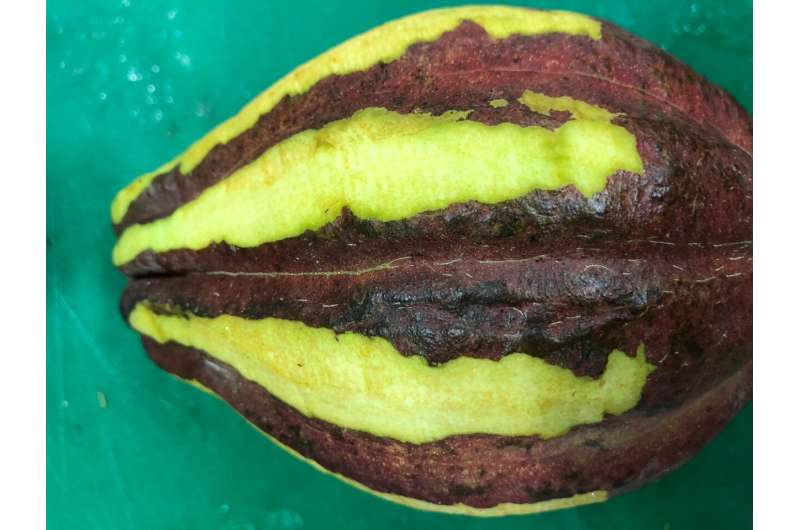This article has been reviewed according to Science X's editorial process and policies. Editors have highlighted the following attributes while ensuring the content's credibility:
fact-checked
peer-reviewed publication
trusted source
proofread
Cocoa pods—a source of chocolate, and potentially, flame retardants

As Halloween approaches, so too does the anticipation of a trick-or-treating stash filled with fun-sized chocolate candy bars. But to satisfy our collective craving for this indulgence, millions of cocoa pods are harvested annually. While the beans and pulp go to make chocolate, their husks are thrown away. Now, researchers reporting in ACS Sustainable Chemistry & Engineering show that cocoa pod husks could be a useful starting material for flame retardants.
It's estimated that about 24 million tons of leftover cocoa pod husks are produced yearly. Waste husks have been explored as a source of carbohydrates and sugars, but they also contain lignin, a tough lipid polymer found in many woody plants. And lignin could be a renewable replacement for some substances typically derived from petroleum, such as flame retardants.
While most methods to produce lignin have centered on hardwood trees, some scientists have processed other plant materials that would otherwise go to waste, such as rice husks and pomegranate peels. So, Nicholas J. Westwood and coworkers wanted to see if high-quality lignin could be extracted from cocoa pod husks and determine whether it has the potential to make valuable, practical materials.
The researchers obtained cocoa husks and milled them into a powder. After rinsing to remove fatty residues, they boiled the powdered husks in a mixture of butanol and acid, a standard lignin extraction method called the butanosolv process. They next confirmed the isolated lignin's quality and high purity, finding no evidence of carbohydrates or other contaminants.
Then, over the course of three chemical steps, the team modified the pure lignin biopolymer to have flame-retardant properties. They attached 9,10-dihydro-9-oxa-10-phosphaphenanthrene-10-oxide, which is a fire suppressant molecule called DOPO, into the backbone of the lignin polymer.
In experiments, when the modified lignin was heated, it charred—but did not burn up—a sign that it could act as a flame retardant. The researchers recognize that human safety tests are important and plan to conduct them after the next phase of testing. In the future, the researchers say they will optimize the properties of their cocoa pod husk-based flame-retardant materials.
More information: Daniel J. Davidson et al, Organosolv Pretreatment of Cocoa Pod Husks: Isolation, Analysis, and Use of Lignin from an Abundant Waste Product, ACS Sustainable Chemistry & Engineering (2023). DOI: 10.1021/acssuschemeng.2c03670
Journal information: ACS Sustainable Chemistry & Engineering
Provided by American Chemical Society





















